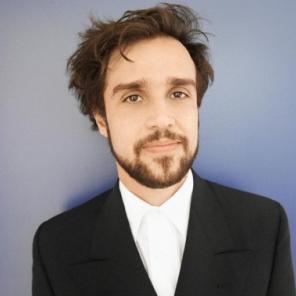
As a dual-scientist and clinician, Marcelo Freire, DDS, PhD, DMSc, is an Associate Professor at the Genomic Medicine and Infectious Disease Department at the J. Craig Venter Institute. He is also an Adjunct Professor of Infectious Diseases of the School of Medicine at the University of California, San Diego.
Among many accolades, Freire is a recipient of the centennial Balint Orban Memorial Award from the Academy of Periodontology. After earning his DDS from Campos, Rio de Janeiro, Brazil, he received his PhD in Craniofacial Biology, focusing on Immune Engineering for Tissue Regeneration, from the University of Southern California. He completed his Certificate in Periodontology, Doctor of Medical Sciences, and research postdoctoral at Harvard University. Freire previously served as a faculty member at Harvard and the Forsyth Institute and is a current Diplomate of the American Board of Periodontology.
His current research focuses on human chronic inflammation and investigating how host-microbial interactions control health versus dysbiosis. His team utilizes systemic and oral fluids to investigate research questions and understand how immune cells are working. His laboratory has received awards from NIH and other foundations to discover immune signals that are common to oral and systemic chronic inflammation in conditions such as COVID-19 and type-2 diabetes. Freire’s laboratory is shedding light on translational science, from saliva diagnostics to chronic inflammation pathogenesis to novel therapeutics in tissue healing.
How did you first learn about the AADOCR and what motivated you to join?
My motivation in science is endless curiosity. I joined when I was in graduate school and was highly motivated to learn, interact and be part of a community. In one of the meetings, I was able to present my work related to developing novel immune molecules for bone regeneration, which won me the IADR Bernard G. Sarnat Award in Craniofacial Biology! That meeting brought a reward system that is often missing in science. Also, I was able to meet multiple deans and leaders in the field, and interact with a Nobel Laureate. I participated in many capacities, including as a speaker, conference chair, symposium organizer, and poster presenter. There were always productive conversations and a great exchange of knowledge. The meeting always brings incredible enthusiasm and refreshes my energy to come back and continue innovating.
Can you describe your research? How do you hope your work will impact others?
As a scientist, I have laboratory at the renowned J. Craig Venter Institute in La Jolla, California. My laboratory aims to decode the secrets of chronic inflammation. Traditionally, inflammation is described with the four traditional, cardinal signs of inflammation: redness, heat, swelling, and pain. (These were first noted by the Roman medical writer Aulus Cornelius Celsus in the 1st century AD.) But one realizes that underneath these clinical signs and symptoms, there are molecular cues signaling and controlling tissue response, both acutely and in the long term. The magnitude and type of response our immune system builds depends on other factors beyond genetics, such as its environment and the microbiome. Sometimes microbes act up. They can act as pathogens and can cause infection by traveling through our blood vessels until immune cells detect their presence. For example, when Sars-Cov-2 enters through our nasal or oral passages and into our lungs, an army of immune cells get into formation and go to the front line. These cells might create a general response, but also a specific one that eventually leads to neutralization of the virus. Similar examples can be found on oral bacteria. But questions need to be answered: Why is the inflammatory response exacerbated to a point of causing tissue damage in some individuals? Why do some people not have symptoms? We study this variability of host response. This is a big topic in my lab. Whether we are sequencing the molecular information or evaluating cellular phenotypes, we want to create a new map for immune responses. We also utilize saliva as a fluid to investigate some of these molecular questions.
You have served on many Committees with the association. What motivated you to get so involved? What would you tell others who are considering giving back/volunteering about the value of your experience?
One motivation to highlight is to give back. Participating as a committee member or event organizer can be so rewarding, especially when meeting motivated students. It offers the chance to interact with people from multiple fields and different career levels. I was able to meet interesting people, students, and professors from across the globe. It also provides a chance to expand your horizons in terms of career development. There are unlimited opportunities, such as getting feedback for a paper or a grant, professional exchanges, and an open platform to interact more broadly. I recommend getting involved!
What role do you think professional associations can play in supporting its members who are members of underrepresented minority/ethnic groups?
Disrupting the privilege chains and opening the doors for people who don’t come in the classical “package” of what a scientist should look like is a hard. Associations such as AADOCR have an opportunity to open doors and to provide a welcoming and safe environment to all types of scientists. Recognizing diversity and giving a chance to members of underrepresented minority/ethnic groups can go a long way.
I encourage AADOCR members to help increase the diversity of the research workforce by inviting teams from different areas and backgrounds. I am constantly involved in outreach, and being part of the community breaks barriers in profound ways. Associations can develop programs with scholarships, motivate STEM support at an early age, and develop field trips and workshops. Members need a safe space for communication, interaction, and, ultimately, time to work on discoveries that can impact the world.




